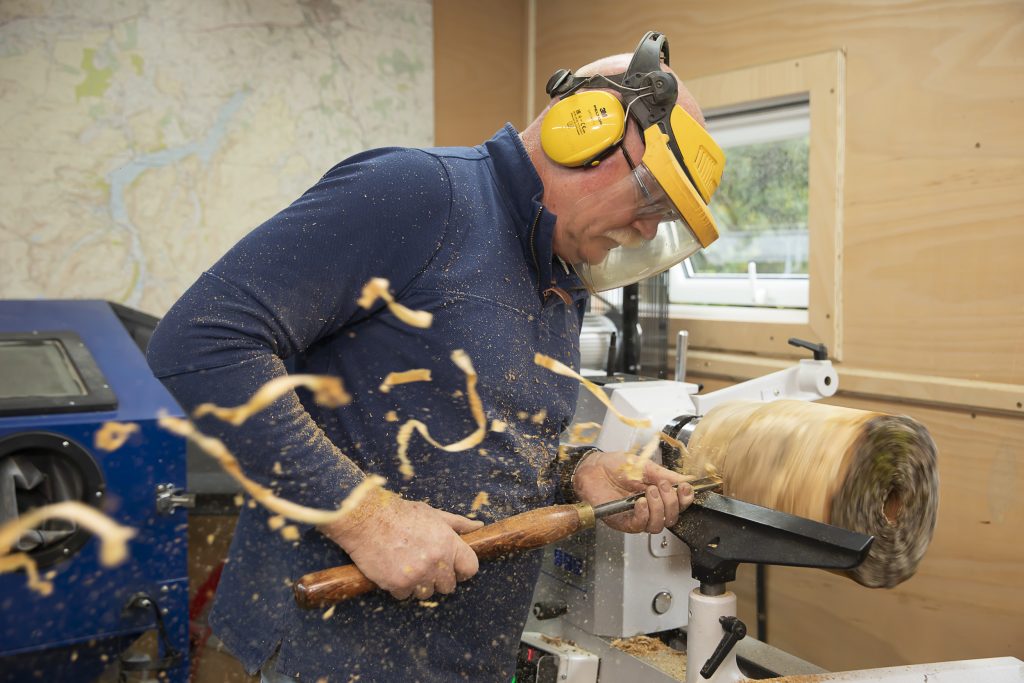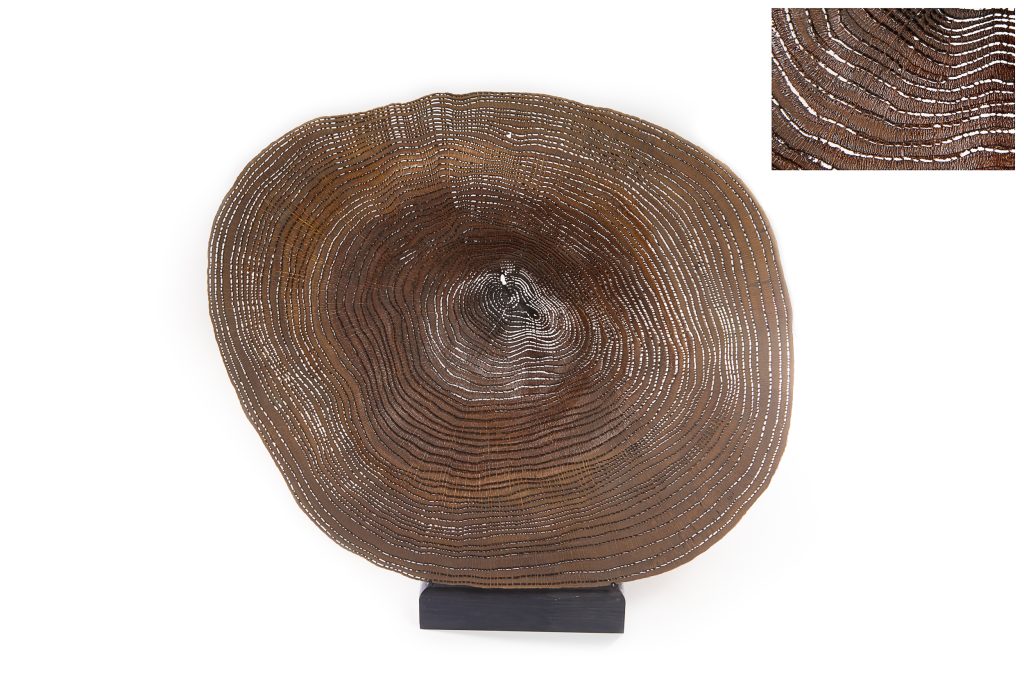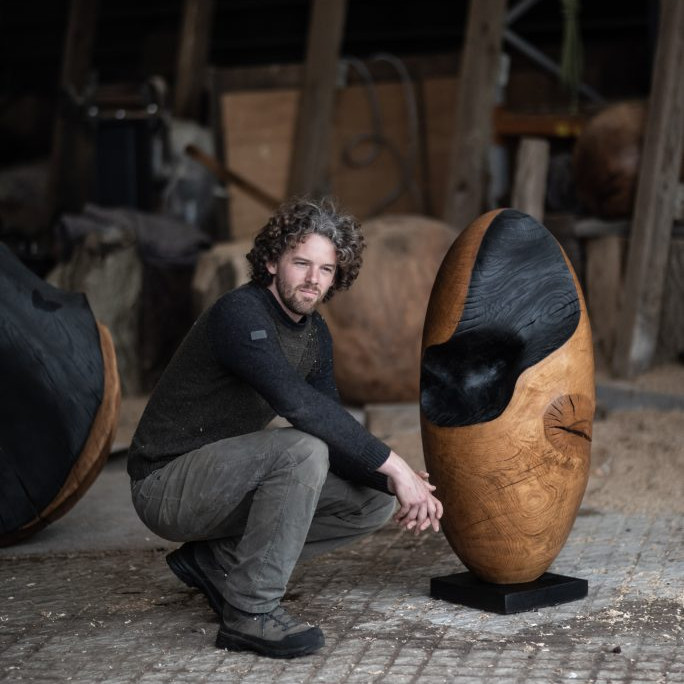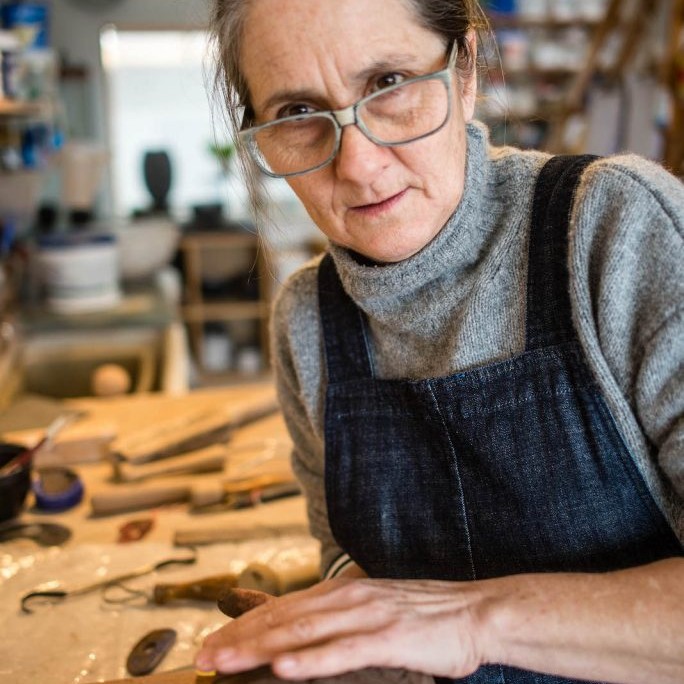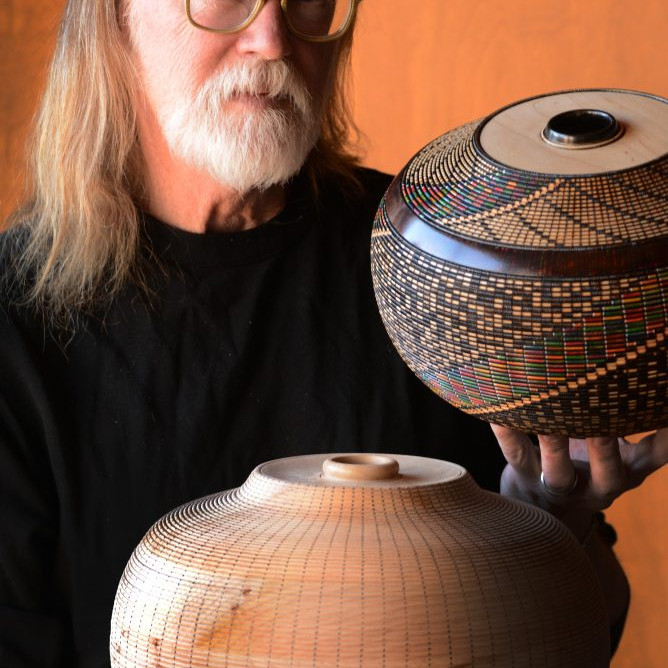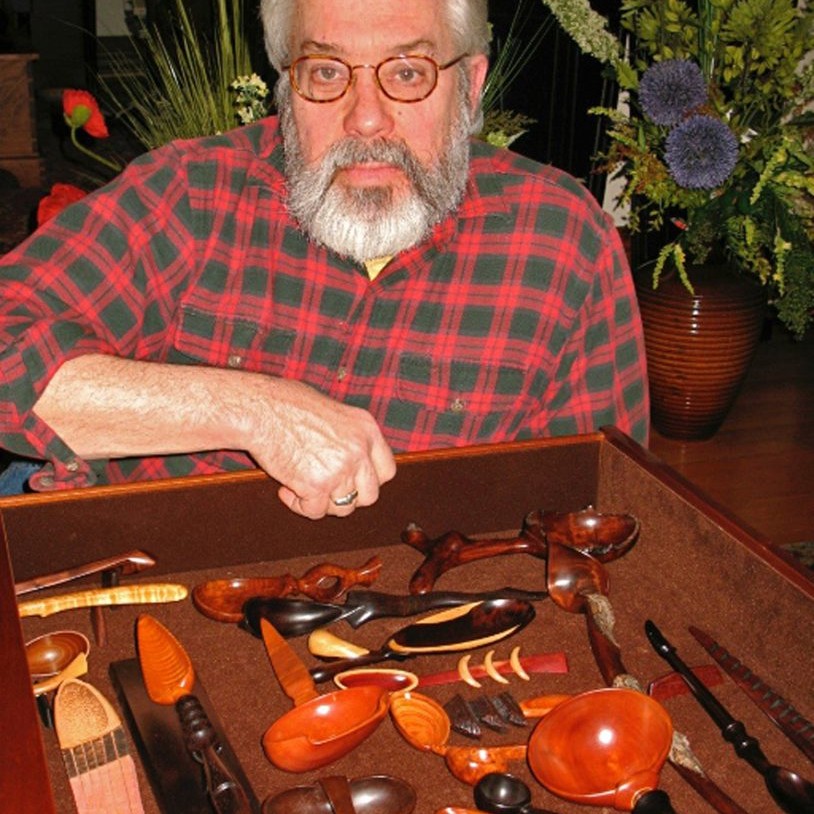Greg Kent Wood Artist
Your wood comes via local tree surgeons. Do you give them a list of trees you are after, or is it a mystery delivery?
I collect wood from wherever I can get it. I have a good relationship with some local tree surgeons and they let me go over to their yards and collect nice pieces which would have been firewood. I also get a lot of wood from local farmers and homes when trees have fallen down in storms. If I hear a chainsaw I’ll go and see what’s being cut down.
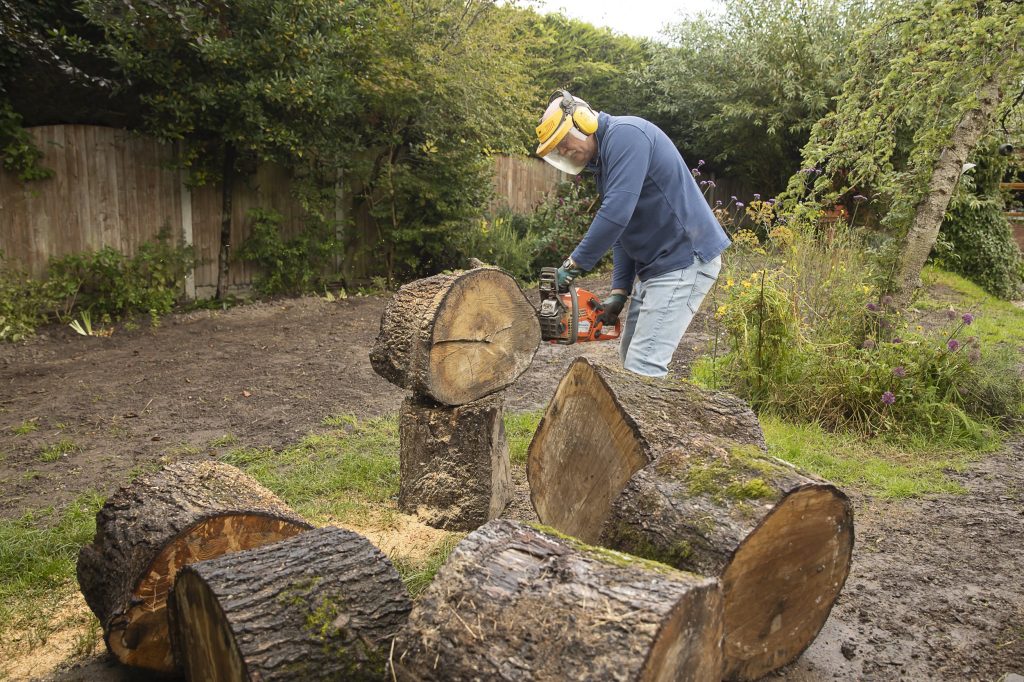
Can you expand on the term ‘Turned Green’ and the importance of it in the whole process of your work?
Normally woodturners turn wood that is dry, that is less than 12% humidity. Normally they would buy this from specialist suppliers. These sources are often expensive and unsustainable. When I get wood from a tree surgeon it will have a moisture content of over 50% and been destined to be firewood. This fresh wood is called ‘greenwood’. This can then be rough turned, coated in wax and left to dry (for 6 months to 1 year) before the final turn. What I do with oak is turn it green down to 2-3mm thick and straight to the final shape. I do this green because it is impossible to get that thin with dry wood as it becomes too brittle. Also, oak is notorious for cracking and if you turn it is this thin it takes the stresses out of the wood and the pieces just warp slightly into some lovely organic shapes.
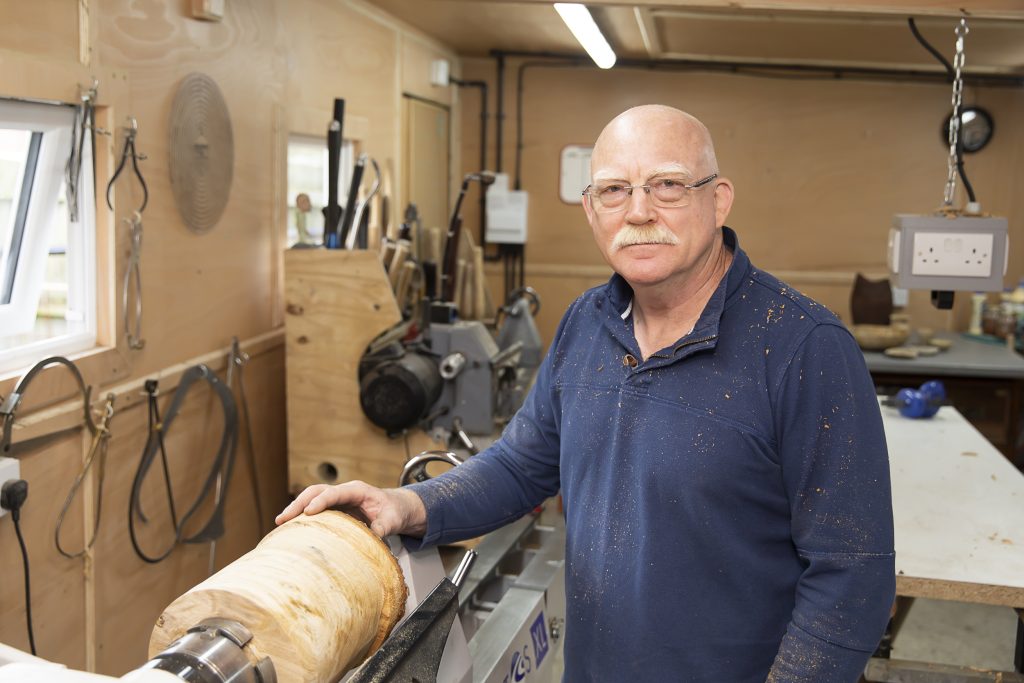
How long do you need to store the wood for?
I try and turn the wood straight away and usually with 3 months of it being felled. When I have turned it down to 2mm thick it then dries within a week and is ready for sandblasting.
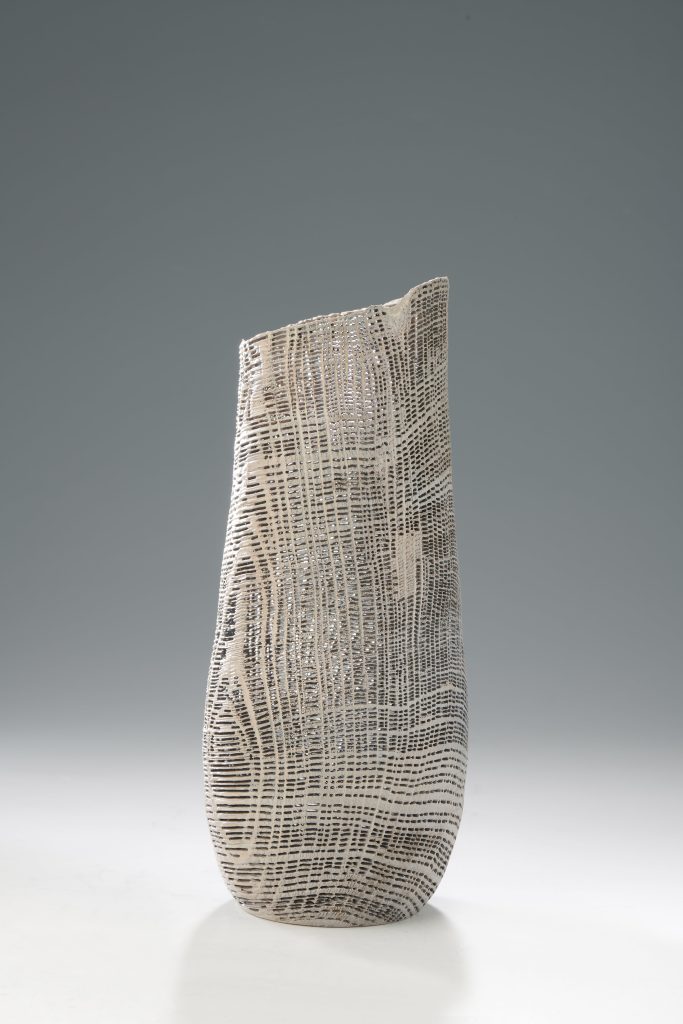 White Vase
White Vase
Where do you store it and how do you catalogue each piece?
The wood is stored outside. I’m not sure what you mean by cataloguing. All the wood I use is oak and admin is not my strong point. I seem to retain an encyclopaedic memory of where the wood came from and its story. The final piece is then stamped and numbered and has a certificate of authenticity.
How does sandblasting add to the final technique?
Sandblasting is what sets these pieces apart. The sandblasting picks out the soft spring growth and removes it. Oak has an almost unique feature called medullary rays. These go across the growth rings and give it it’s strength. The sandblasting leaves the harder summer growth rings and the medullary rays creating the lace like effect.
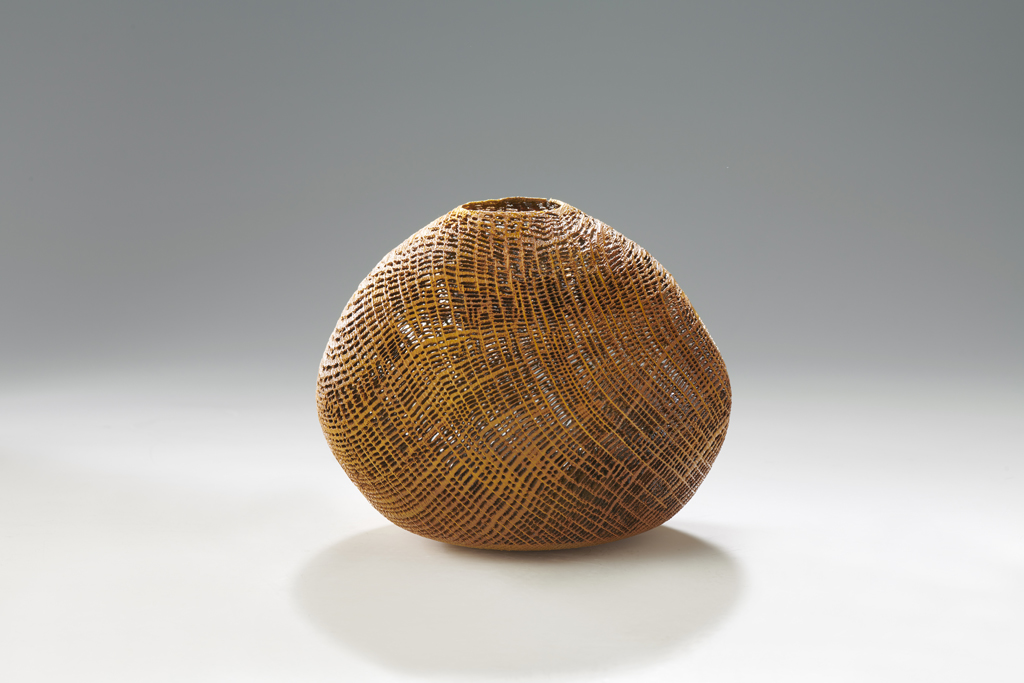 Hollow Form
Hollow Form
Discuss the different coloured stains you use.
I use a range of stains and finishes. It all depends on the how the wood looks after drying and sandblasting. If is has retained the golden glow of the oak I will leave it in the natural colour. If is has knots and bark inclusions I might highlight these with autumnal wood stains. Other pieces are either ebonised or stained in a natural stain such as honey or earth colour.
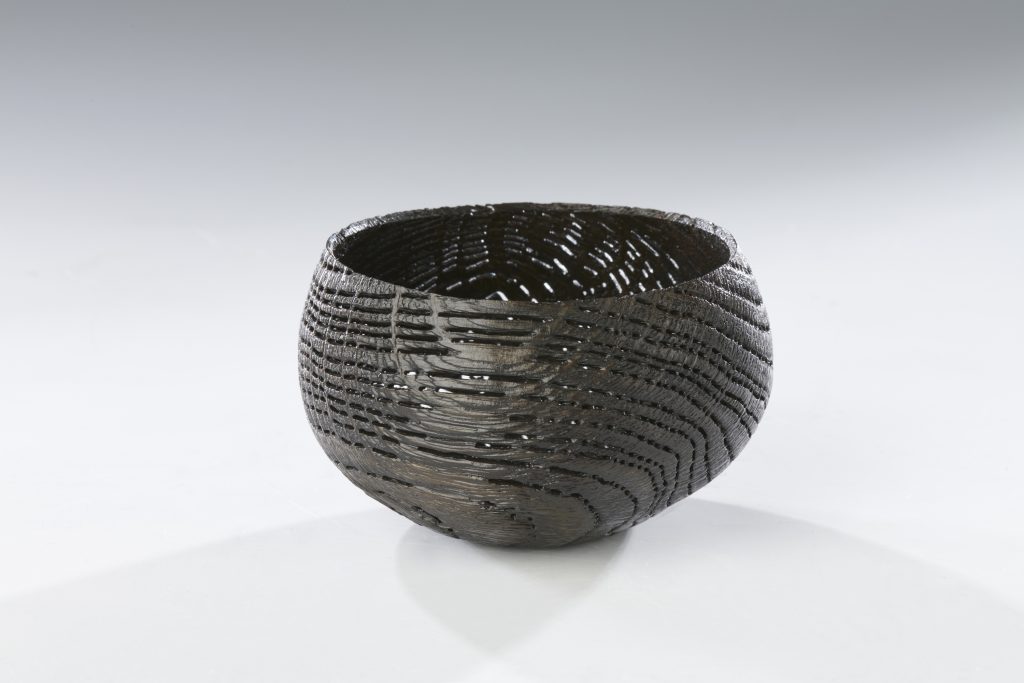 Small Bowl
Small Bowl
Discuss the fragility and care need for your pieces.
All the pieces are treated with a wood hardener and lacquered. So, whilst they are fragile they are like fine china.
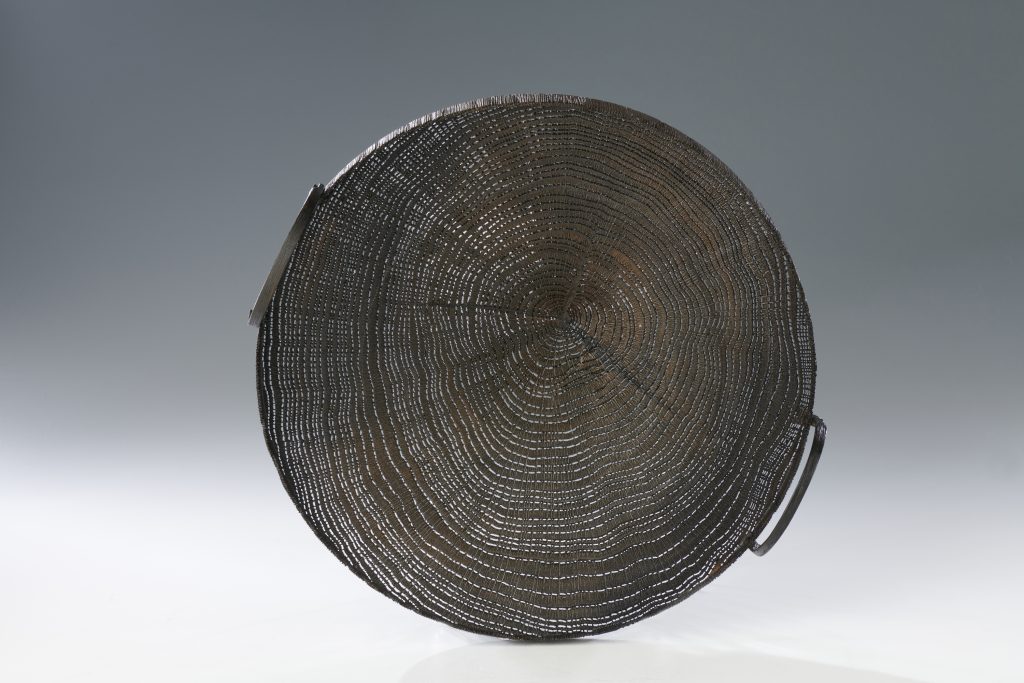
Tray
Take one large piece and one small piece and discuss why they still delight you?
A small piece I particularly like is the teacups that I made. I used oak with very small growth rings and this really highlighted the delicacy of the tea service. I also created handles from oak veneer and attached them with tiny oak rivets. The whole piece appeared to be incredibly delicate and yet was remarkably strong. They really captured the narrative I was trying to create.
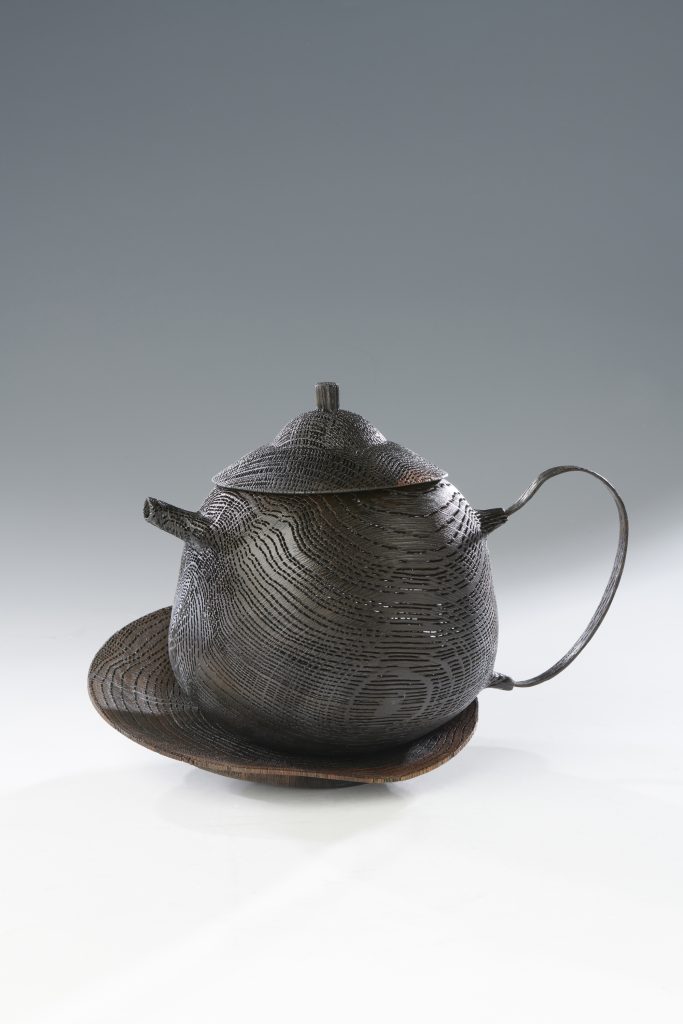
Tea Pot
The largest vessel I have created was actually made from quite a well-rotted piece of oak which I wanted to preserve because of its character. This involved using a deep hollowing technique that was new to me. I created a very large bowl and retained the natural edge of the wood. This piece was shortlisted for the Wood Awards.
Show us your wooden tea and coffee pots. How did they come about?
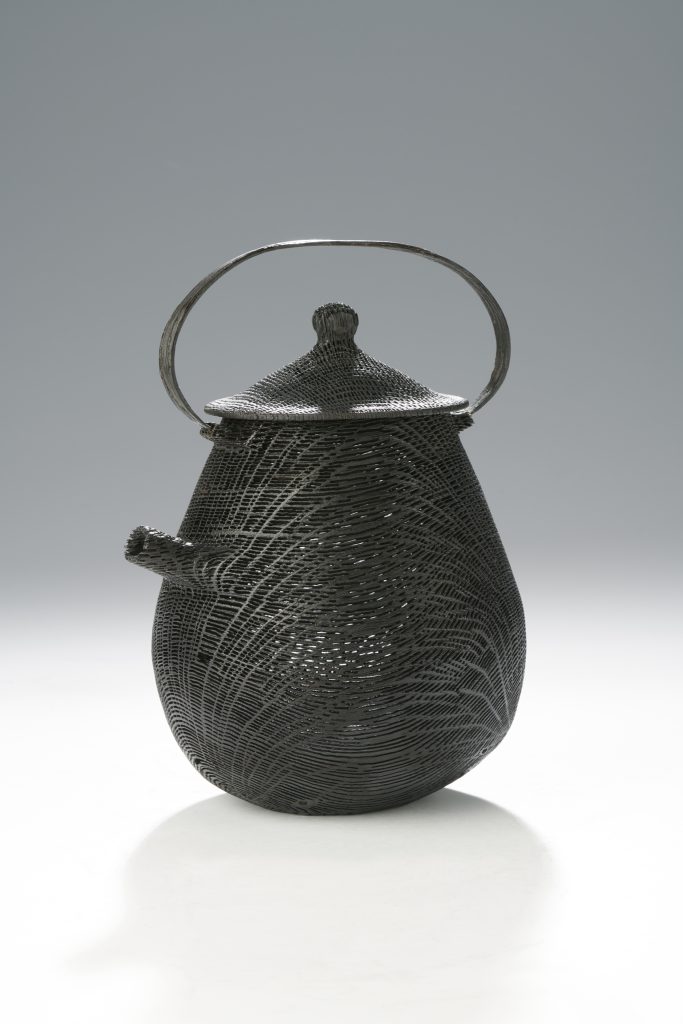
Coffee Pot
I applied to be part of the Collect Open at the Crafts Council’s craft exhibition at Somerset House in London 2023. My submission had to have a narrative to explain why it was important. So, I created a tea service entitled Tea and Imperial Tea Sympathy. In making a Victorian tea service I was referencing the importance of tea in Britain’s imperial past and the exploitation and abuse that came with it. This is never discussed when we teach history in UK schools and needs to be understood before we can move on as a diverse society in a post-Brexit global world. Tea exemplifies the reality of Britain’s Imperial past. It was the driver for the Opium Wars, it fuelled the desire for sugar and the slave trade, and it was the catalyst for the Boston Tea Party and American Independence. This subsequently led to the Industrial revolution and the Climate Crisis. This is a history we need to understand in UK. Using wood sustainably to create new products is something we need pursue.
Because of the lace technique, you have been able to develop lighting. Comment on the effect of light and shadows in your work.
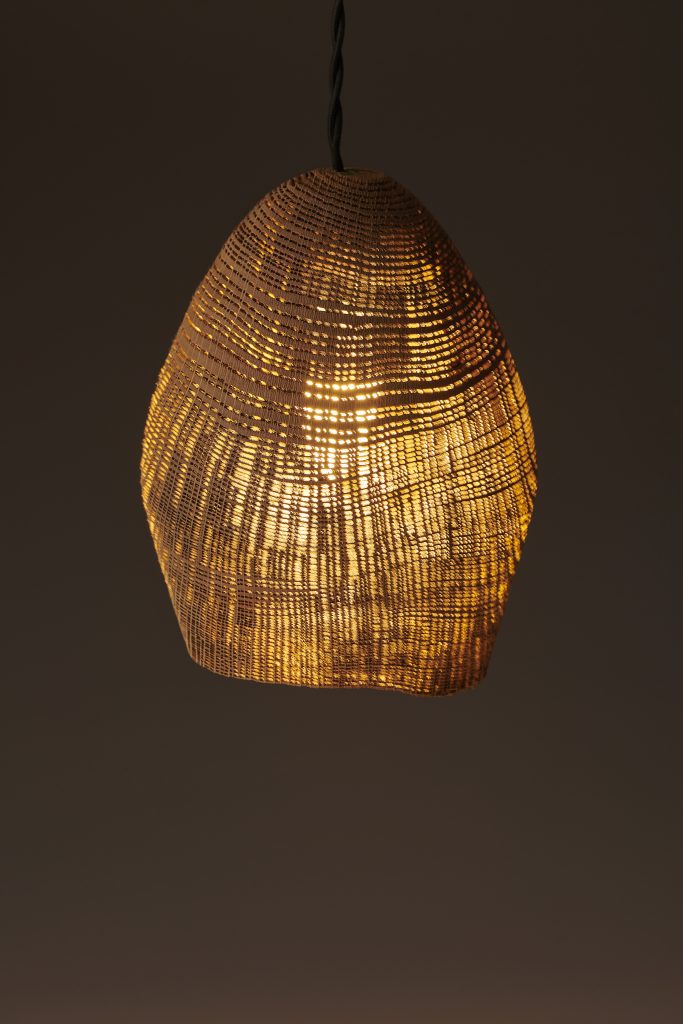 Light Shade 4
Light Shade 4
I particularly enjoy illuminating my pieces. Not only does this highlight the lace effect but it also makes the pieces glow and casts the lace pattern across the surfaces in the room.
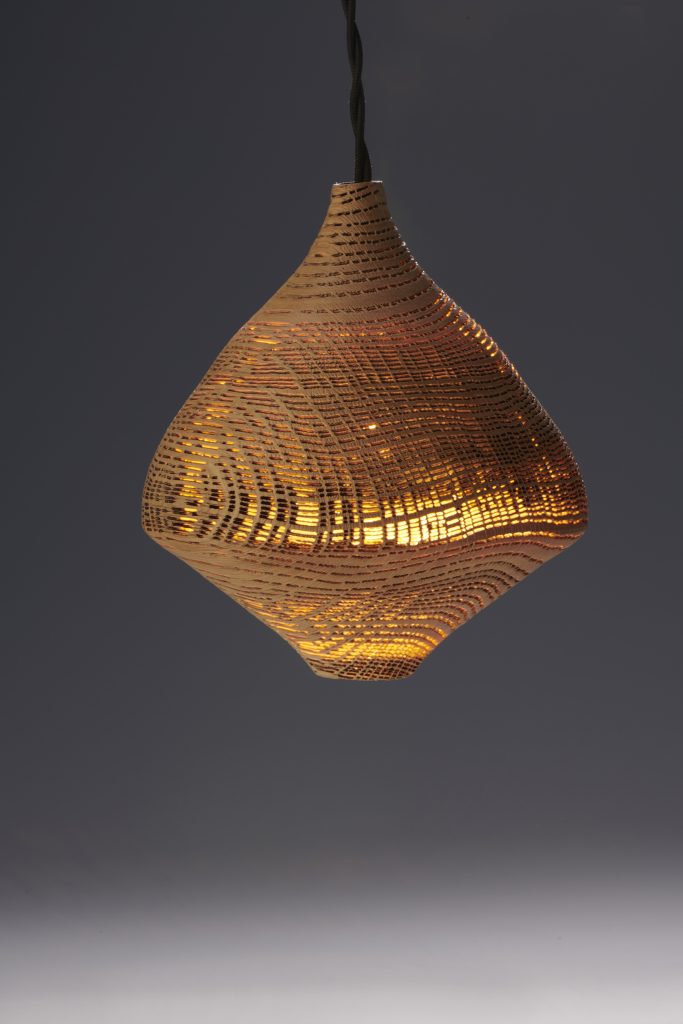
Light shade 1
Do you take commissions?
I do take commissions and particularly enjoy making pieces for people who have had a favourite tree fall. I have created vases, bowls and lamps for people in a variety of fallen woods. I also made a bowl in the form of a velodrome from the cycling track at the Manchester velodrome which hosted the Commonwealth Games and World Championships.
Comment how you have been able to transform a tree trunk into a leaf.
I love the leaf shape and especially the Autumn colours. They are an ideal shape where the wood I have acquired is damaged in a way they makes it unsuitable for making into a disc.
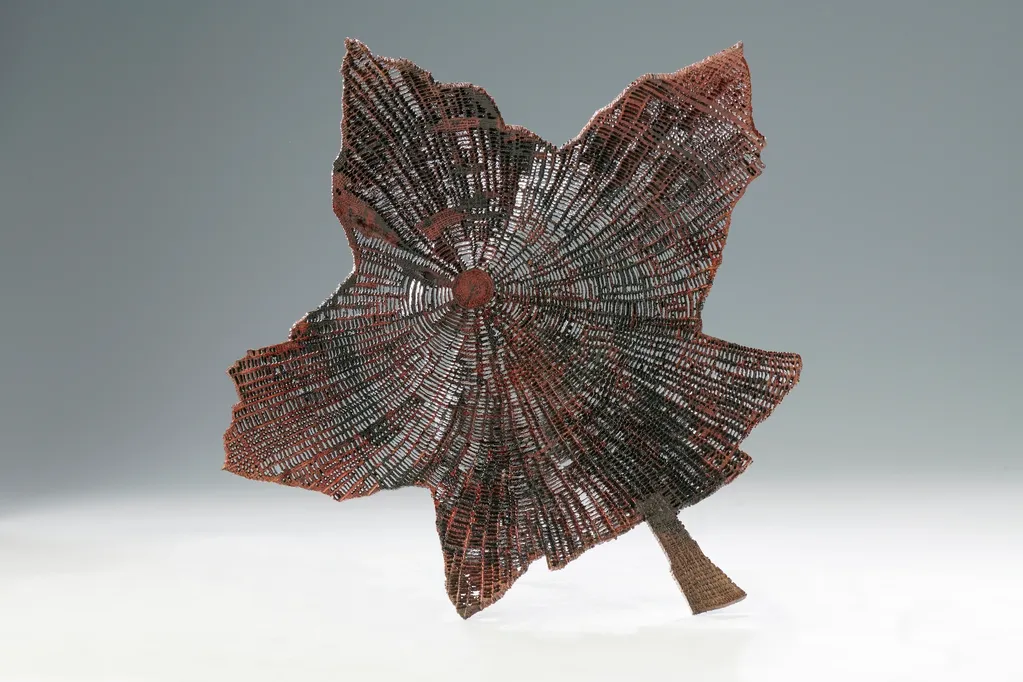
Leaf
Is your work around the world? Where are some of the places that you have sent them to?
My work has been sold to people in America, Italy, Thailand and Australia. In fact, Claire Delmar at Studio CD in Sydney has recently just acquired some of my work for her Interior Design business and Gallery.
Has there been a ‘special’ tree that has been removed or died that has led to a commission?
I was recently contacted by a lovely couple in Liverpool who had a 250 year oak tree they had taken down because their neighbours complained about the shade and leaves. I was able to make them some large vases and light fittings from the tree which remind them of a lost friend.
RPT what does this mean? Who can use it?
The RPT is the Register of Professional Turners. Founded in 1978, the Register of Professional Turners comprises skilled woodturning artists who have a professional approach and are craftspeople to trust. All members will have undergone a rigorous assessment before being accepted on to the roll of the Register.
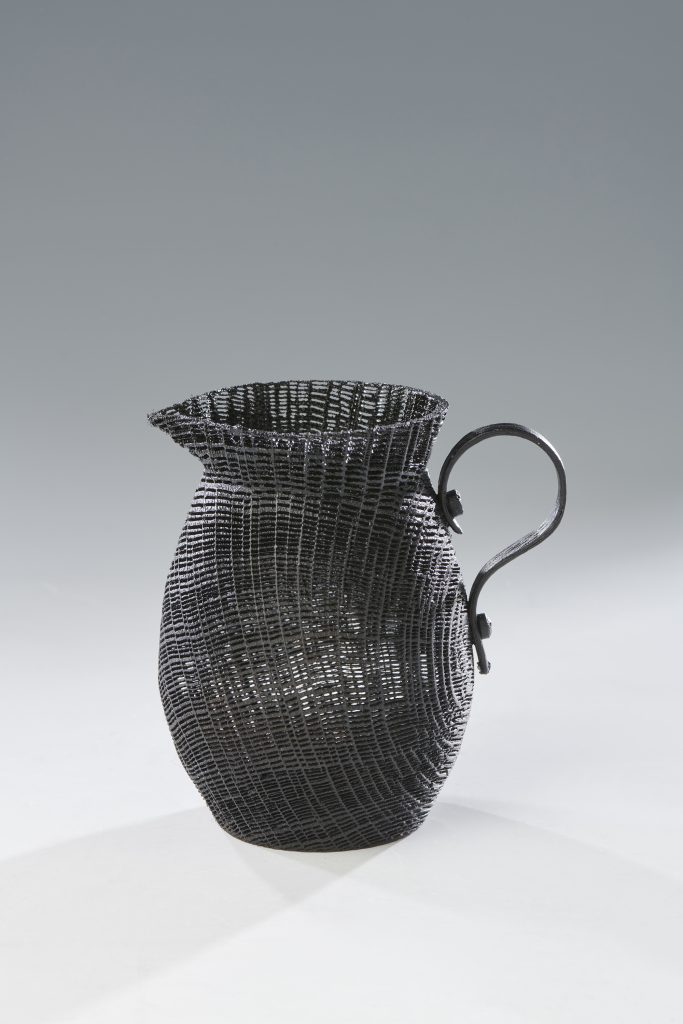 Milk Jug
Milk Jug
It is here where you will find a woodturner who will be able to carry out your request whether it be crafting gorgeous, stair-spindles, creating a piece of sumptuous art work, or teaching and demonstrating the craft of woodturning.
Discuss one tool that you use often and why?
The tool I use most often is my Hamlet 1/2inch fingernail grind bowl gouge. I can use this tool to rough turn a piece of wood and then do the fine work when finishing the piece and bring it down to 2mm thick.
How long have you been wood turning and how did you first get into it?
I have been woodturning for 7 years. I got into it because I needed some tapered pieces for a boat I was making. So I watched some YouTube videos and was mesmerised by both the process of shaping wood as if it was like clay and the patterns the wood revealed. It then rapidly became a hobby and a way of relaxing after a stressful day of teaching.
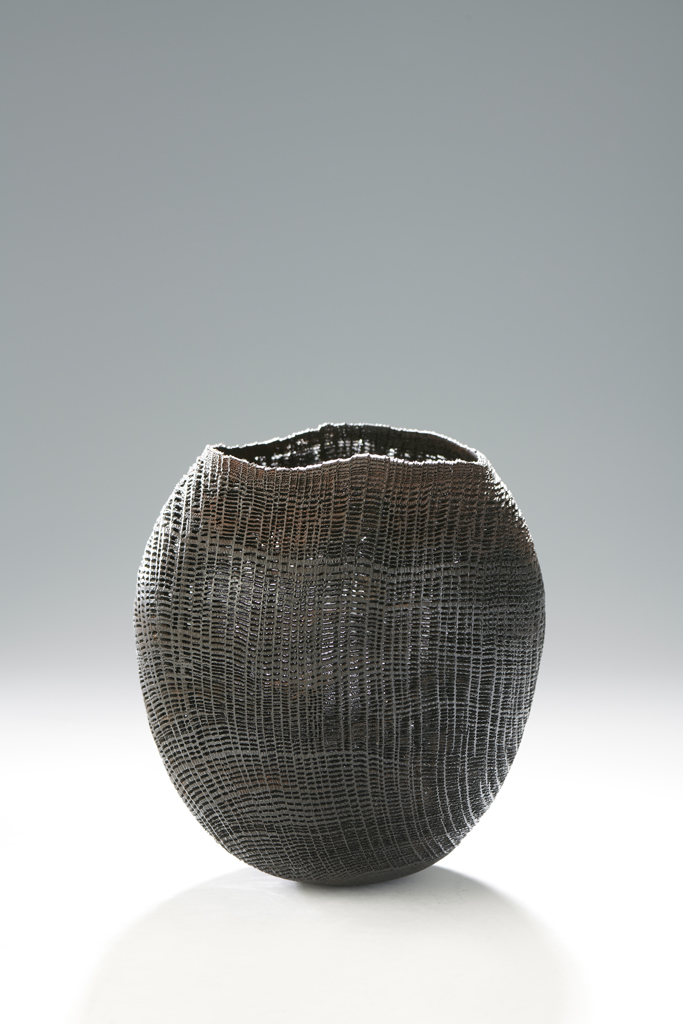 Ebonised hollow form
Ebonised hollow form
What training did you do?
None whatsoever. I have spent a lifetime chasing qualifications believing there was a correct way to do things. I watched numerous You Tube videos and realised there were many people doing different things in their own way. Whilst there are ways of using the tools I particularly enjoyed watching American Turners. They had a ‘make it happen’ approach. If they had an idea in mind, they then used their skills, the tools they had available and their own problem solving abilities to create an object. From there on I ‘hoovered’ up ideas and techniques from You Tube and the woodturning club I attend and then I enjoyed using a creativity and problem-solving skills I never realised I had to create the objects I liked.
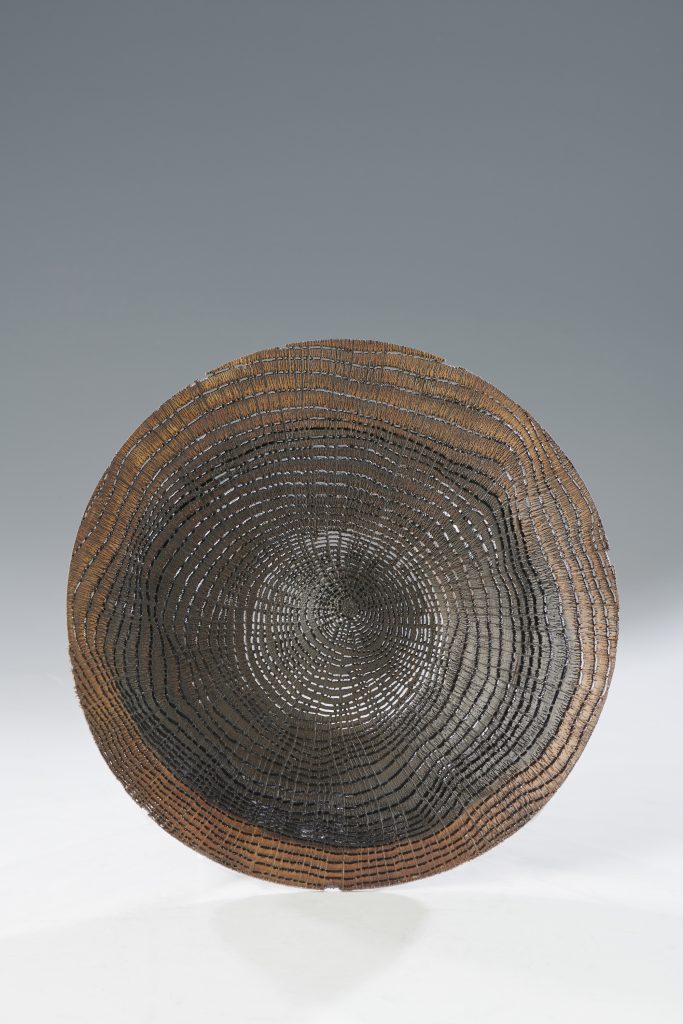
Disc
What recognition/accolades have you had for them? Any awards?
I have recently exhibited at the Craft Council’s Collect Open. Collect is one of the world’s most influential fairs focusing on contemporary art and design made in the last five years by living artists. My coffee pot was selected as the fair Director’s choice. I also had a piece at the 2023 Royal Academy Summer Exhibition in London. I was also invited to exhibit at the Worshipful Company of Turners, ‘Master’s Exhibition’. Through the theme, ‘Coronation’, it showcased the finest elite woodturning in the UK. I exhibited as part of Future Heritage at Chelsea Harbourside in October. The world’s premier design centre is a champion of design talent and gives greater focus to the well-established Future Heritage, the forward-looking showcase of established and emerging makers curated by the influential design journalist and curator Corinne Julius. Corinne has been great mentor to me since I embarked on this journey.
Finally, my large natural edge bowl was shortlisted for the Wood awards in London.
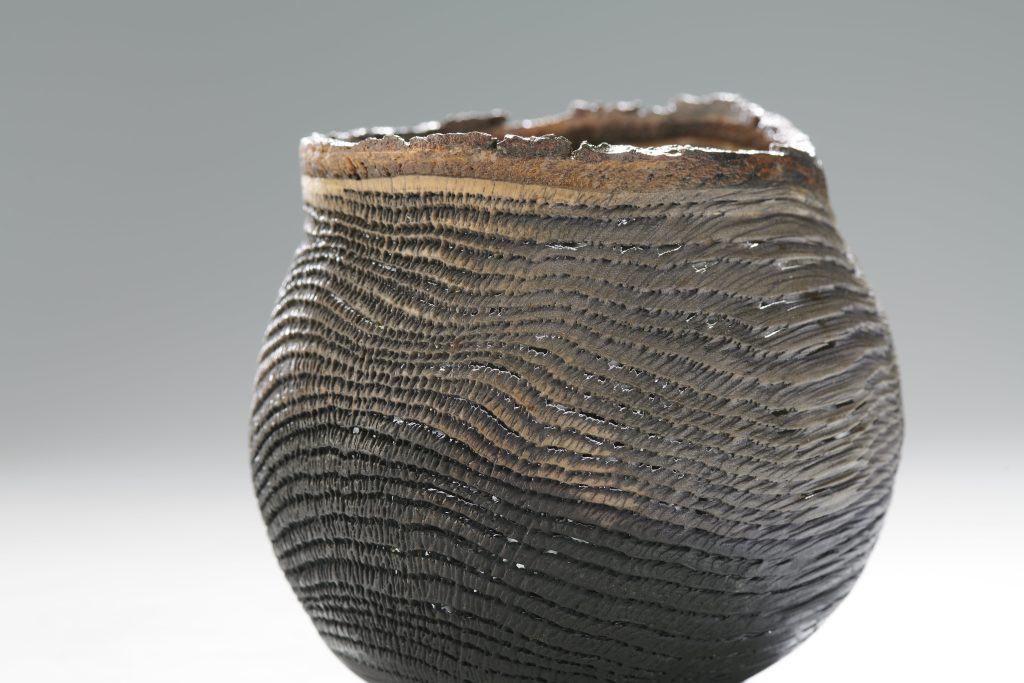 Ebonised natural edge bowl (2)
Ebonised natural edge bowl (2)
Where can your work be seen?
As well as being available online my work is available at the Flow Gallery in London.
Contact:
Greg Kent
Deborah Blakeley, Melbourne, Australia
Interview by Deborah Blakeley, December 2023

Think a colleague or friend could benefit from this interview?
Knowledge is one of the biggest assets in any business. So why not forward this on to your friends and colleagues so they too can start taking advantage of the insightful information the artist has given?
Other artists you may be interested in:


